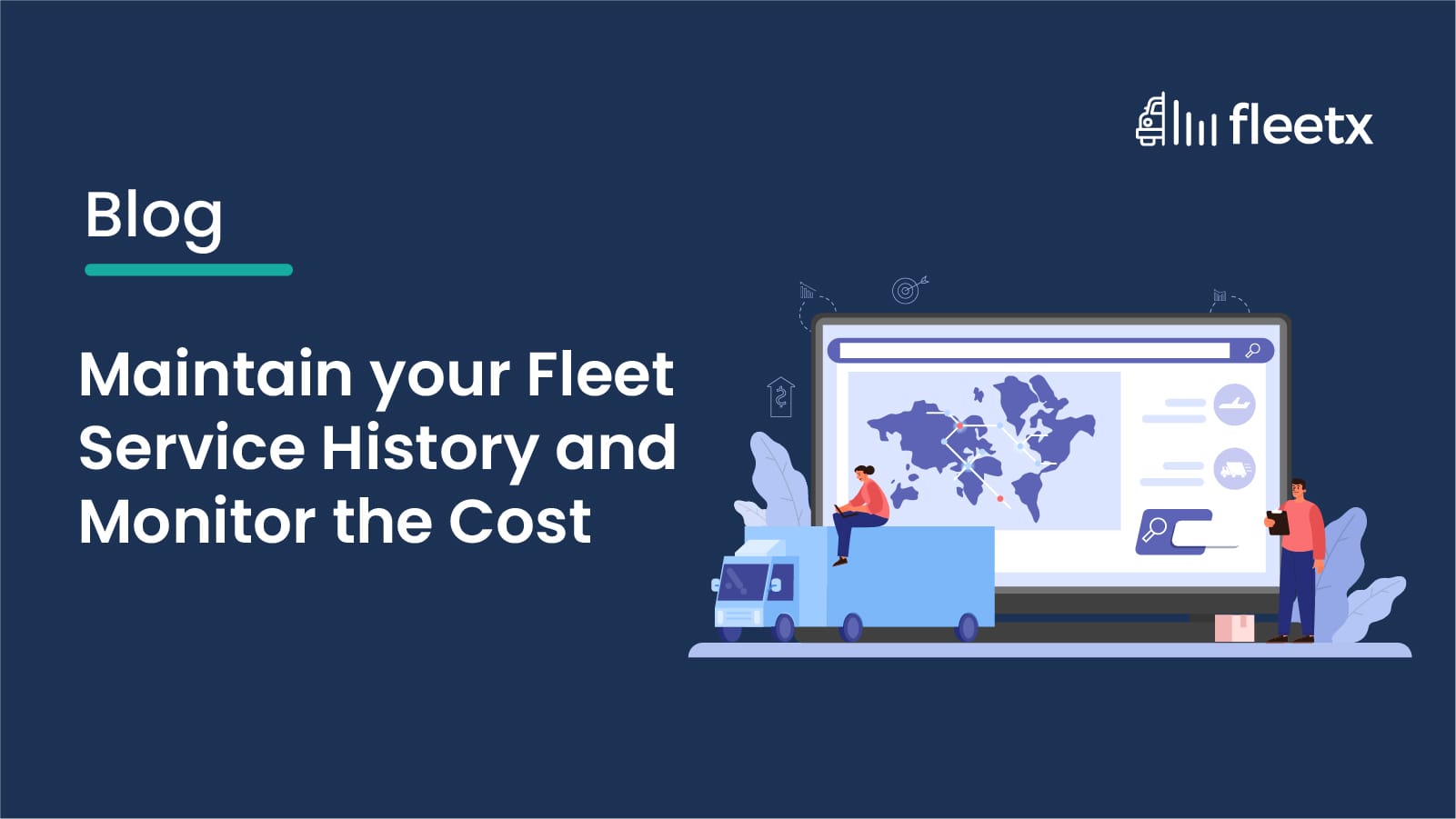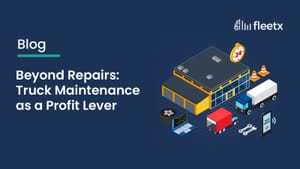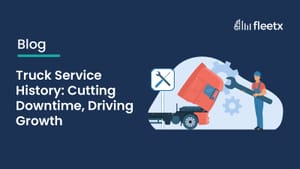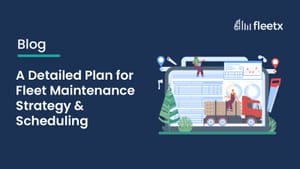
In the transport business, every kilometer comes at a price. Fuel, tolls, and driver wages are predictable line items, but there’s one expense that can easily spin out of control - fleet maintenance. Unexpected breakdowns, delayed services, and ignored repairs don’t just disrupt schedules; they bleed money from your operations. The most effective shield against this chaos is a well-maintained fleet service history log.
Gone are the days when maintenance details lived in dusty registers or half-filled spreadsheets. Today, digital logs give transport owners real-time visibility into every vehicle’s health and the costs tied to it. This isn’t just about compliance - it’s about controlling expenses, improving uptime, and protecting your assets.
Essential Elements of a Vehicle Maintenance Log
A fleet service log is only as useful as the information it captures. If your entries are vague, your insights will be worthless. A robust maintenance log should include:
- Date and Mileage/Engine Hours – To track service intervals accurately.
- Service Performed – Clearly defined tasks (oil change, brake pad replacement, engine diagnostics).
- Parts Replaced – Including serial numbers for warranty tracking.
- Labor Hours – To compare in-house vs. vendor efficiency.
- Technician/Vendor Details – For accountability and follow-up.
- Cost Breakdown – Separate parts, labor, and overhead.
- Next Due Service – To set reminders for preventive maintenance.
- Condition Notes and Photos – Visual proof of wear, damage, or completed repairs.
When standardized across your fleet, this data becomes a reliable foundation for predictive maintenance - helping you fix issues before they cause breakdowns.
How to Leverage Maintenance Logs to Control Fleet Expenses
A well-structured maintenance log doesn’t just record what was fixed - it’s essentially your financial X-ray machine, revealing exactly where your money is flowing and where it’s being wasted. When used strategically, service history turns from a passive record into an active cost-control weapon. Here’s how transport business owners can maximize their value:
Spot High-Maintenance Vehicles Every fleet has that one troublemaker - the truck that’s always in the workshop. By analyzing service logs, you can identify which vehicles are consistently pushing up the repair costs. If the annual repair bill rivals the cost of acquiring a newer truck, it’s time to stop pouring money into a sinking asset and plan for replacement. This not only saves repair costs but also improves uptime.
Identify Recurring Issues Logs help you move beyond “symptom fixing” and into “root-cause solving.” For example, repeated tire blowouts on the same vehicle might not just be a parts issue - it could be improper wheel alignment, aggressive driving, or even poor-quality vendor supplies. By spotting these patterns, you can tackle the root cause instead of repeatedly paying for the same fix.
Benchmark Cost Per Kilometer Maintenance logs allow you to calculate service expenses per kilometer (or per operating hour for heavy-duty equipment). This metric is invaluable for comparing vehicle performance across the fleet. If Truck A is costing ₹4/km in maintenance while Truck B runs at ₹2.5/km, you know where to focus investigations. Over time, benchmarking helps you set realistic cost thresholds for each vehicle class.
Negotiate Better Vendor Terms Numbers speak louder than guesswork. Armed with service cost data from your logs, you can approach workshops, parts suppliers, and tire vendors with hard evidence. Whether it’s asking for volume discounts, warranty claims, or better service packages, accurate records give you bargaining power. Vendors respect businesses that know their numbers.
Forecast Expenses Accurately Past service data creates a predictive map of future costs. For example, if your logs show that clutches typically wear out every 80,000 km or that brake pads last 30,000 km, you can budget accordingly. This foresight allows you to smooth cash flow, reduce financial shocks, and plan maintenance schedules around operational peaks. Essentially, you turn unpredictable expenses into predictable line items.
Uncover Driver-Related Costs Though often overlooked, logs can also highlight driver behavior as a hidden expense factor. Excessive brake wear, frequent clutch replacements, or high accident-related repairs may trace back to specific drivers. With this insight, you can arrange targeted training, change assignments, or enforce stricter operating protocols - directly reducing costs tied to driver habits.
Insurance and Compliance Savings Accurate maintenance logs aren’t just good for internal control - they’re powerful externally too. They strengthen your case during insurance claims by proving that your vehicles were properly maintained. They also make regulatory inspections smoother, helping you avoid costly fines or unplanned downtime.
Transitioning from Manual to Automated Fleet Service Logs
Many transport businesses still rely on notebooks, registers, or endless Excel sheets to track vehicle maintenance. While it feels “manageable,” the hidden costs of manual tracking pile up quickly - missed entries, data loss, and delayed decision-making. Here’s why automation is no longer optional:
- Eliminates Human Error – No more illegible handwriting, missing invoices, or mistyped odometer readings.
- Saves Time – Technicians and drivers log details instantly with mobile apps, reducing back-office paperwork.
- Improves Accuracy – Telematics integrations auto-capture mileage, engine hours, and diagnostic codes.
- Centralized Records – All data lives in one secure, searchable database instead of scattered files and spreadsheets.
- Faster Reporting – Generate cost, compliance, and utilization reports in minutes, not hours.
- Strengthens Compliance – Automated inspection records and service logs are audit-ready at the click of a button.
- Supports Scalability – As your fleet grows, automation ensures your maintenance tracking system scales without chaos.
Key Features of a Service Log Software - What Fleetx Offers
Not all fleet maintenance systems are built equal. Some are just digital notebooks, while others are strategic control towers for your operations. Before putting money down, ensure your maintenance log software is equipped with these non-negotiable features:
Mobile Accessibility Maintenance doesn’t happen behind a desk. Drivers spot issues mid-route, and technicians resolve them in the workshop. A mobile-friendly platform ensures updates happen in real time, not scribbled on slips of paper “to be entered later”. This reduces missed entries, improves accuracy, and ensures every data point - from a driver’s inspection note to a photo of a worn brake pad gets logged immediately.
Automation of Reminders Preventive maintenance only works if it’s done on time. Automated alerts for oil changes, safety inspections, and compliance checks ensure nothing slips through the cracks. The software should allow customizable intervals (mileage, engine hours, or calendar dates) so your reminders match your fleet’s operating patterns. This keeps vehicles road-ready and eliminates costly surprises.
Integration with Telematics A log that requires manual odometer entries is a recipe for errors. When integrated with telematics, the system automatically captures mileage, engine hours, fuel consumption, and even fault codes from onboard diagnostics. This real-time syncing eliminates guesswork, speeds up service scheduling, and creates a direct connection between vehicle performance and maintenance history.
Cost Tracking and Reporting Without financial visibility, a log is just a diary. A good system breaks down expenses by vehicle, part, vendor, and labor. This lets you analyze trends - like rising tire costs or unusually high vendor charges and take corrective action. Look for software that can generate detailed reports, from cost per kilometer to total maintenance spend by depot, giving you actionable financial intelligence.
Customizable Dashboards Every transport operation is different. Some owners want to monitor cost per trip; others focus on uptime or preventive compliance. A customizable dashboard allows you to view the KPIs that matter most to your business. Whether it’s overdue work orders, fleet availability, or per-truck ROI, the dashboard should be a “control room” tailored to your decision-making style.
Cloud Storage Paper records get lost, local systems crash, but cloud-based storage ensures your fleet data is secure, accessible, and shareable across teams and locations. Whether you’re in the head office, a remote depot, or on the road, cloud access guarantees the same, up-to-date information. It also supports multi-user collaboration, so fleet managers, mechanics, and accountants are always aligned.
Regulatory Compliance Features Transport businesses are always under regulatory scrutiny - roadworthiness, pollution checks, safety standards, and more. Maintenance software should simplify compliance by generating inspection logs and service records that are audit-ready at the click of a button. Exportable, timestamped reports mean you’re never scrambling when inspectors or insurers ask for proof of maintenance.
Service Workflow Optimization: Work Order Creation and Tracking
Maintenance logs are not standalone documents - they fuel efficient service workflows. The right system should allow you to:
- Create Digital Work Orders – With all required details pre-filled from vehicle history.
- Assign Tasks Automatically – To in-house technicians or external vendors.
- Track Progress in Real Time – Know which jobs are pending, in progress, or completed.
- Log Costs Instantly – Eliminate guesswork and manual back-entry.
- Generate Audit Trails – Every service activity is time-stamped, improving accountability.
Work order automation reduces missed preventive maintenance (PMs), minimizes downtime, and ensures every rupee spent is traceable. For a transport owner, this translates into better asset utilization and fewer roadside breakdowns.
The Hidden Profits Lurking in Fleet Service History
A truck’s story isn’t written on its odometer - it’s written in its service log. Every oil change, every replaced bearing, every kilometer of wear is a data point waiting to guide your business decisions. When transport businesses maintain accurate service histories and track maintenance costs, they unlock an overlooked profit lever.
The real win isn’t just cutting expenses; it’s creating a system where maintenance becomes predictable, costs are transparent, and downtime is minimized.
For owners who treat fleet service logs not as paperwork, but as strategy, the rewards are clear: longer-lasting vehicles, leaner budgets, safer drivers, and stronger competitiveness in the transport market.
Why is maintaining a digital fleet service log better than using registers or spreadsheets?
Manual tracking often leads to missed entries, illegible notes, and scattered data. Digital logs, on the other hand, provide real-time visibility, automate mileage and diagnostic updates, centralize records, and generate instant reports. This reduces human error, saves time, and ensures maintenance data is always audit-ready.
How do maintenance logs help reduce fleet expenses?
A structured maintenance log acts like a financial X-ray. It highlights high-maintenance vehicles, recurring repair patterns, and cost per kilometer. This enables transport owners to make informed decisions - whether it’s replacing a vehicle, negotiating with vendors, or fixing root-cause issues - ultimately cutting unnecessary expenses and improving uptime.
What features should I look for in a fleet maintenance log software?
A robust solution should include mobile accessibility, automated reminders, telematics integration, cost tracking, customizable dashboards, cloud storage, regulatory compliance tools, and work order automation. These features turn logs from passive records into proactive tools for managing costs, compliance, and asset life cycles.
Can fleet service logs improve compliance and insurance claims?
Yes. Accurate digital records prove vehicles are properly maintained, which strengthens insurance claims and reduces the risk of disputes. They also simplify compliance with roadworthiness and safety standards by generating audit-ready inspection and service reports instantly- helping avoid fines and unplanned downtime.






